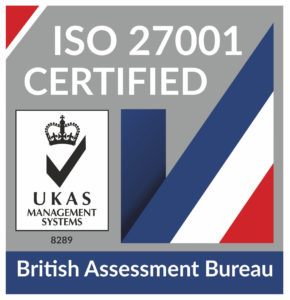
HaloCRM Guides
Jamf Integration
In this guide we will cover:
- Enabling the Jamf Integration
- Connecting the Jamf Integration
- Settings
- Site Mappings
- Asset Type Mappings
- Assets
- Mobiles
- Imports
- Importing Assets
Note: The Jamf Integration is compatible with Jamf Classic and Jamf Pro. It is currently not usable with other Jamf products such as Jamf School.
The Jamf integration is able to import Mobile Devices and Computers over from Jamf into Halo, and it also has the ability to integrate with multiple Jamf instances.
Enabling the Jamf Integration
In Configuration > Integrations > Asset Management and Alerting, you will find the Jamf integration. Hover over this and click the "plus" icon that appears to enable it.
Fig 1. Enabling the Jamf module.
Clicking into the integration will bring up a list format that shows any Jamf URLs that have been created. You can add multiple Jamf tenants, as seen below. Click "New" in the top right corner to create a new connection.
Fig 2. List of Jamf tenants.
Connecting the Jamf Integration
In the "Details" tab, you'll first need to input your Jamf URL, followed by a Jamf account username and password. Then in the "Instance Type" dropdown, select whether you are using Jamf Classic or Jamf Pro.
Fig 3. Jamf initial setup on Details tab.
Settings
Go to the "Settings" tab. Here you will select which asset types you wish to import - mobiles, computer or both, as well as what asset matching field you wish to use. If an asset with the same version of the matching field already exists, it will update this one instead of creating a new one.
There is also then two checkboxes underneath.
- "Do not update Asset Types" will mean the asset type will not change, even if it is set to something different in Jamf.
- "Do not create new Asset records (update only)" will mean new assets will not be created, and if the details do not match an existing asset in Halo, they will be ignored in the import.
Fig 4. Settings tab.
Site Mappings
The next step is the "Site Mappings" tab. Here you set the Default Site for assets, how sites are matched, and the mappings.
The default site will get all of the assets that were not matched on to sites or users.
The site matching type selected below will give the site mappings precedence over the site of the user that is matched. The account will need at minimum read permissions for mobile devices and computers endpoints.
The other options for type are using the matched user's site only or using site mappings to determine the site from the Jamf device's building only. The other is fail safe, using the site mappings and falling back to the user's site if a mapping for the Jamf device's building is not present.
Fig 5. Site Mappings tab.
Click "Add". To configure a site mapping, you will need to assign a Halo Site to a Jamf Building. This will be what Halo uses when importing to ensure the asset is assigned to the correct site.
Fig 6. Site Mappings configuration popup.
Asset Type Mappings
The next tab is "Asset Type Mappings". Here you will set how an asset's type is determined. If using the same type for all assets, the defaults for computers and mobiles are set here.
You can also use rules or a field to determine the type.
There are three options for the "Determining an Asset's type" field.
- Use the same type for all Assets - If you would like all imported assets to have the same asset type when imported set the "Determining an Asset's type" field to be "Use the same type for all Assets" then set the "Default Asset Type" field to be the asset type you would like assets from Jamf to be.
- Use a field to determine each Asset's type - If you would like all imported assets' types to be determined by a particular field, set the set the "Determining an Asset's type" field to be "Use a field to determine each Asset's type". Then in "Field for determining an Asset's type", choose the field you would like the type to depend on. The field you choose must contain the name of the desired asset type, if this name can be matched to an existing asset type in Halo, it will be assigned this asset type. If the name is not the same as an asset type in Halo, a new asset type will be created. Note: Names must be identical in order to match. This setting is used if you have a field in Jamf that already determines an asset's type and you would like the types to be consistent between Halo and Jamf.
- Determine Asset type using rules - If you would like asset types to be determined by asset rules set the set the "Determining an Asset's type" field to be "Determine asset type using rules". Now you will be able to set asset's types based on rules. These rules are based on field values, and if matched will assign an asset to the chosen asset type. When creating a rule first add criteria for the rule, select the Halo field that you would like to base the criteria on, then set the rule type and the outcome needed in the field to match the rule. If an asset matches this rule it will be imported as this asset type.
Use the same type for all Assets
If you would like all imported assets to have the same asset type when imported set the "Determining an Asset's type" field to be "Use the same type for all Assets". This will follow the "Default Asset type" set below for computers or mobile devices. Any computers imported will have the asset type of "Laptop", and any mobile will have the asset type "Mobile Phone".
Fig 7. Asset type mappings by default.
Use a field to determine each Asset's type
The second option is "Use a field to determine each Asset's type". This will show an option to select a Jamf field to determine asset type. Here, "jamf_type" is used. If the value "camera" is in this field within Jamf, it will match to an asset type in Halo with the same name if it exists. If it does not exist, it will create an asset type of "camera" and that asset type will be given the default group that is set in the field next to it.
Fig 8. Asset type mappings by field.
Determine Asset type using rules
The final option is to "Determine Asset Type using rules". Upon selection, a table will show to map these rules. If an asset does not match a rule, it will use the default asset types.
Fig 9. Asset type mappings by rules.
Clicking "Add" will show a popup to choose a device type, and set the criteria. Here, if the model equals "iPhone 16", the asset type will be "Mobile Phone". You can also set a sequence, so if an asset matches multiple rules it will follow the first in the sequence (i.e. 1 will take precedence over 2).
Fig 10. Asset type mapping criteria.
Assets
The "Assets" tab is where the import mappings are set. This is used to map fields associated with a Jamf asset to the asset in Halo, based on an asset in Jamf including the wider range of devices, like Macs.
Fig 11. Assets tab.
When adding fields to the asset mapping, you will be shown the following fields.
Fig 12. Asset Field mappings.
If the field type chosen is "Custom Field" you can choose a field in Jamf to match a custom field to in Halo (Entity must be "Asset"). Check out the custom fields guide for more info. Extension Attributes can be mapped to Custom Fields or Asset Fields.
Fig 13. Custom Field mappings.
Mobiles
The "Mobiles" tab configures the same mappings, but for mobile imports instead. In the field mappings table, you can map the fields associated with the Jamf asset to the Halo asset. Mobiles in Jamf include iPhones and iPads for example.
Fig 14. Mobiles tab.
Imports
Finally, the "Imports" tab. Here is where you can enable the Halo integrator for the module (the module must be switched on) and automatic syncs will occur.
Fig 15. Imports tab.
Importing Assets
You can now import your assets, either from the "Import Assets and Mobiles" button in the "Assets"/"Mobiles" tabs, or via the Halo integrator. If manually importing, the following import screen will show upon loading. Select the assets to import (by default all will be selected), and click the "Start" button.
Note: If importing via the Halo integrator, all will be imported/synced.
Fig 16. Asset and mobile import screen.
In the assets tab, you can also map a Jamf field to create a new field in Halo upon import, shown for the "building" field below.
Fig 17. Mapping a field to a new field.
Upon import, that field will be added to the asset type. It will take the name of the Jamf field, like below.
Fig 18. New field added to the asset type.
The field will also then be populated on the asset in the details.
Fig 19. New "building" field on an asset of that type.
Popular Guides
- Asset Import - CSV/XLS/Spreadsheet Method
- Call Management in Halo
- Creating a New Application for API Connections
- Creating Agents and Editing Agent Details
- Departments and Teams
- Halo Integrator
- Importing Data
- Multiple New Portals with different branding for one customer [Hosted]
- NHServer Deprecation User Guide
- Organisation Basics
- Organising Teams of Agents
- Step-by-Step Configuration Walk Through



